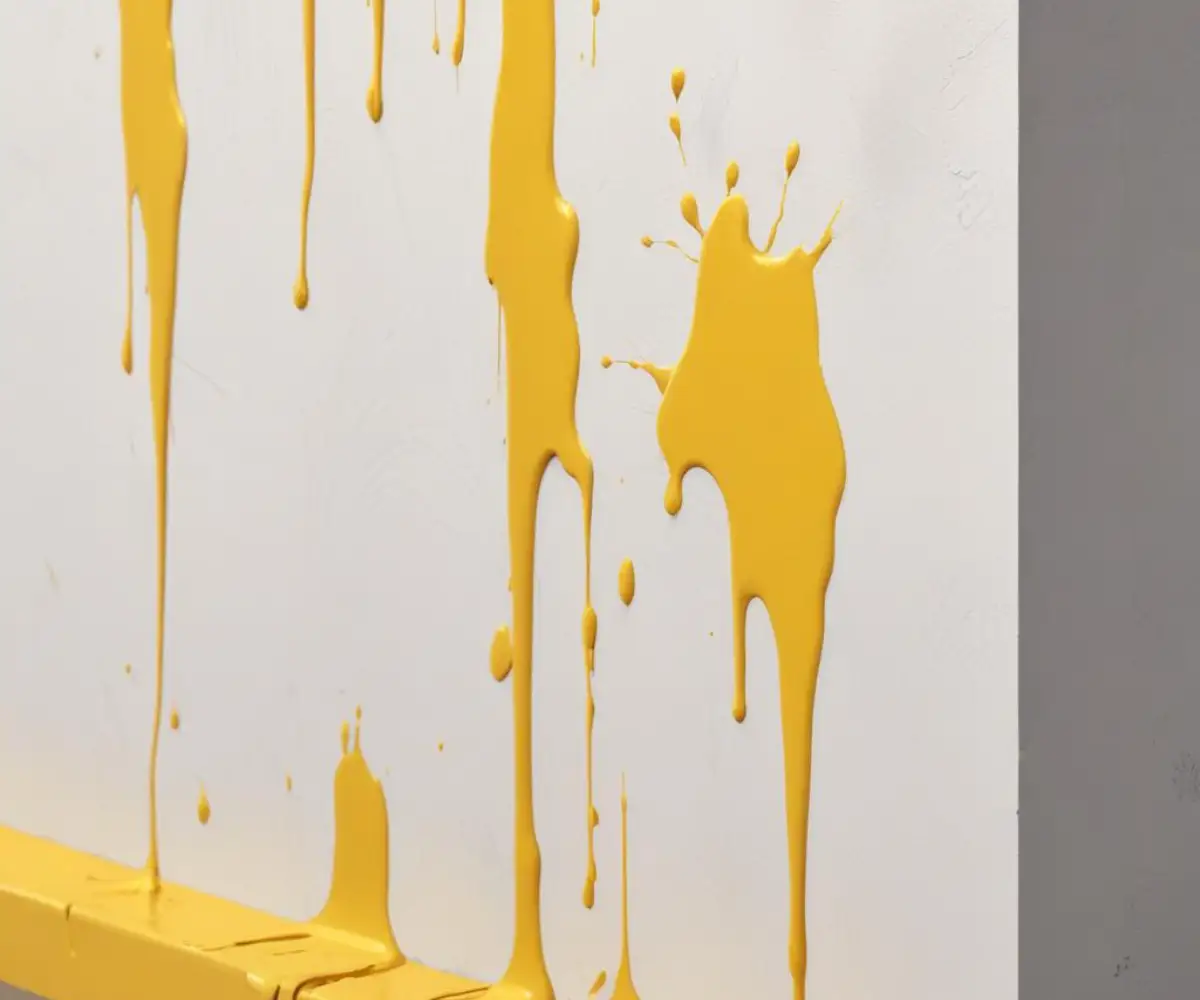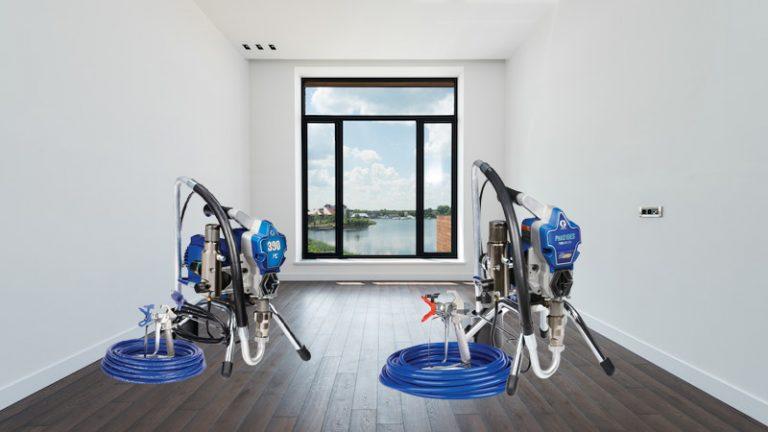Old Paint Bleeding Through? Here’s the Pro Secret to Stop It for Good
There is nothing more frustrating than spending hours, or even days, on a painting project only to see ugly blotches of the old color or stubborn stains reappear through your fresh, new coat. That disheartening sight of yellow, brown, or pink discoloration is known as paint bleed-through. It’s a common problem that can make you feel like all your hard work and money has been wasted.
This phenomenon isn’t just a simple case of the new paint being too thin. It’s a chemical reaction where substances from the underlying surface dissolve into the new paint layer, rising to the top and ruining the finish. But the good news is, with the right knowledge and preparation, you can conquer paint bleed-through permanently.
You'll Learn About
Decoding the Bleed: What Causes Old Stains to Reappear?
Understanding why paint bleeds is the first step toward preventing it. The issue almost always stems from contaminants on the original surface being “reactivated” by the solvents in your new paint. When a new layer of paint is applied, its moisture or solvents can draw out soluble compounds from below, pulling them to the surface as the paint dries.
Several common culprits are responsible for this frustrating problem. Identifying the source of the stain is critical to choosing the right method to block it for good.
Tannin Bleed from Wood
Woods like cedar, redwood, mahogany, and oak are rich in natural oils and tannins. These water-soluble compounds are notorious for migrating through water-based latex or acrylic paints, leaving behind a yellowish or brownish stain. This is especially common on wood trim, cabinets, and furniture, and can be triggered by humidity.
Water Stains
Previous water damage from a leaky pipe or roof can leave behind mineral deposits and contaminants within the drywall or plaster. Even after the surface is dry, applying a fresh coat of water-based paint can re-wet these deposits, causing them to wick to the surface and create ugly, map-like brown or yellow stains. If you have recurring issues, it might be a sign of a deeper moisture problem, which you can learn more about in our guide to fixing bleeding walls.
Nicotine and Smoke Residue
In homes where there has been heavy smoking, walls and ceilings become coated with a sticky, yellowish-brown film of tar and nicotine. This residue is incredibly persistent and will easily bleed through standard latex paint, often requiring intensive cleaning and a specialized primer to block both the stain and the odor.
Solvent-Based Stains
Stains from permanent markers, crayons, ink, grease, or oil-based paints and varnishes are also common sources of bleed-through. The solvents in these materials can be reactivated by the new paint, allowing them to dissolve and migrate to the surface. Simply painting over them without sealing the stain first is a recipe for failure.
Using the Wrong Primer
Perhaps the most frequent mistake is using the wrong type of primer. Applying a standard water-based (latex) primer over an oil-based stain or tannin-rich wood is ineffective. The water in the primer will simply dissolve the stain, pulling it right through the primer layer and any subsequent coats of paint.
The Ultimate 5-Step Method to Permanently Block Paint Bleed
Defeating paint bleed-through is all about a methodical approach. Skipping any of these steps is a gamble that will likely result in the stain returning. Follow this process to ensure a flawless, lasting finish.
Step 1: Identify and Clean the Surface Thoroughly
You cannot paint your way out of a dirty surface. Proper cleaning is non-negotiable. The goal is to remove as much of the stain-causing contaminant as possible before you even think about opening a can of primer.
For greasy, oily, or nicotine stains, use a strong degreasing cleaner. A solution of trisodium phosphate (TSP) or a TSP substitute mixed with warm water is highly effective. For mildew, use a mixture of one part bleach to three parts water. Always wear gloves and eye protection and ensure good ventilation when using strong cleaners.
Step 2: Repair and Sand the Surface
Once the wall is clean and completely dry, address any imperfections. Fill cracks and holes with spackle or joint compound. If the previous paint is peeling or chipping, scrape it away and sand the edges smooth to blend them with the surrounding area.
A light sanding of the entire surface, even if it’s in good condition, is a good practice. This process, known as scuff-sanding, dulls the old finish and creates microscopic grooves that help the primer adhere much more effectively. Be sure to wipe away all sanding dust with a damp cloth afterward.

Step 3: Choose the Right Stain-Blocking Primer
This is the most critical step. A high-quality stain-blocking primer creates an impermeable barrier between the old surface and your new paint. Do not use a standard drywall primer or an all-in-one “paint and primer” product for this task. You need a dedicated stain blocker, and the type of stain dictates the type of primer you should use.
The chemistry of the primer must be different from the chemistry of the stain to create an effective block. Water-based stains need a solvent-based primer, and vice-versa. When in doubt, a shellac-based primer is the most reliable, universal solution for the toughest stains.
| Primer Type | Best For Blocking | Pros | Cons |
|---|---|---|---|
| Shellac-Based | Severe water & rust stains, tannins, nicotine, smoke, odors, permanent marker | Excellent adhesion, blocks almost any stain, dries very fast | Strong fumes (requires ventilation), cleanup with denatured alcohol |
| Oil-Based (Alkyd) | Tannins (wood knots), water stains, crayon, grease, ink | Great penetration and adhesion, very durable, effective stain blocker | Slow drying time, strong odor, cleanup with mineral spirits |
| Water-Based (Acrylic) | Minor stains, previously painted surfaces, drywall repairs | Low odor, easy soap & water cleanup, flexible | Ineffective against heavy water stains, tannins, or oil-based stains |
Step 4: Apply the Primer Correctly
Apply a thin, even coat of your chosen stain-blocking primer over the stained area or the entire wall for a uniform finish. Don’t try to achieve complete coverage in one thick coat, as this can lead to long drying times and an uneven texture.
For severe stains, like those from heavy water damage or nicotine, a second coat of primer is often necessary. Follow the manufacturer’s instructions for dry times between coats religiously. Rushing this step can compromise the primer’s ability to seal the stain effectively.
Step 5: Apply Your Finish Coat
Once the final coat of primer is fully cured (again, check the can for specific times), you can finally apply your topcoat of paint. With the stain properly sealed behind the primer barrier, your new color will go on smoothly and evenly, free from the threat of unsightly bleed-through. Apply two coats for the best color and durability.
Common Pitfalls That Lead to Paint Bleed-Through
Avoiding common mistakes is just as important as following the right steps. Many painters, in an effort to save time or money, fall into traps that virtually guarantee the return of stains.
Mistake 1: “I’ll Just Add Another Coat of Paint”
This is the most common and futile approach. No matter how many layers of standard latex paint you apply, a soluble stain will continue to work its way through each new coat. You are only wasting paint, time, and effort without addressing the root cause.
Mistake 2: Insufficient Cleaning
Believing the primer will do all the work is a critical error. Primer needs a clean, stable surface to adhere to. Painting over grease, dirt, or nicotine residue can cause the primer itself to fail, leading to peeling and continued bleed-through.
Mistake 3: Choosing the Wrong Primer
As detailed above, not all primers are created equal. Using a water-based primer on stubborn water stains or wood tannins is like trying to put out a grease fire with water—it only makes the problem worse. This is why sometimes a trusted product like KILZ seems to fail; if the wrong type is used for the specific stain, it won’t be effective. For those experiencing issues with specific products, our article on Drylok yellow spots can provide more targeted advice.
When is it Time to Call a Professional?
While most cases of paint bleed-through are fixable with the right DIY approach, there are situations where the problem points to a more significant underlying issue that may require professional intervention.
If you have persistent moisture causing the stains, it could indicate an active plumbing leak, a roof issue, or poor ventilation that needs to be addressed by a plumber or contractor. Similarly, if stains are accompanied by crumbling or soft drywall, you may have a more serious structural problem. In cases where issues arise from the underlying material itself, such as when drywall mud turns yellow, a professional can help diagnose the cause and recommend the best course of action.
Frequently Asked Questions
Can I just use a paint-and-primer-in-one product?
For blocking serious stains, no. While these products are great for covering existing paint colors, they do not contain the powerful sealing agents found in dedicated oil-based or shellac-based stain-blocking primers.
How long should I wait for the primer to dry?
Always follow the manufacturer’s instructions on the can. Oil-based primers typically require a longer drying time than shellac or water-based primers. Rushing the process and painting over primer that isn’t fully cured is a common cause of failure.
What is the absolute best primer for stopping bleed-through?
For the toughest stains, including nicotine, heavy water damage, and wood tannins, a shellac-based primer like Zinsser B-I-N is widely considered the most effective solution by professionals. It creates a powerful, fast-drying barrier that very few contaminants can penetrate.
Successfully covering old paint and stubborn stains is not about magic, but method. By properly identifying the source of the stain, committing to meticulous surface preparation, and selecting the correct high-performance stain-blocking primer, you can stop bleed-through in its tracks. You can achieve a professional, durable finish that will look great for years to come.

